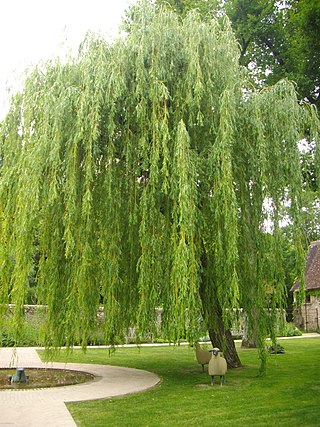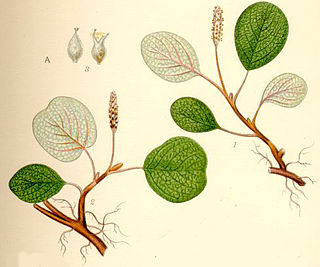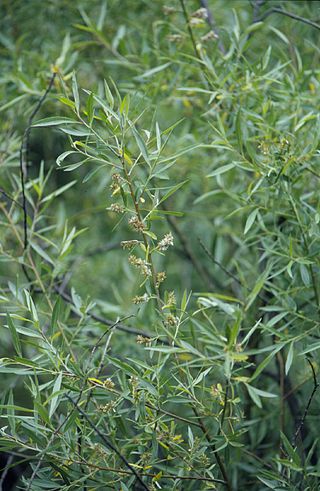
Willows, also called sallows and osiers, from the genus Salix, comprise around 350 species of typically deciduous trees and shrubs, found primarily on moist soils in cold and temperate regions.

Salix alba, the white willow, is a species of willow native to Europe and western and central Asia. The name derives from the white tone to the undersides of the leaves.

Salix caprea, known as goat willow, pussy willow or great sallow, is a common species of willow native to Europe and western and central Asia.

Salix purpurea, the purple willowpurpleosier willow or purple osier, is a species of willow native to most of Europe and western Asia north to the British Isles, Poland, and the Baltic States.

Salix discolor, the American pussy willow or glaucous willow, is a species of willow native to North America, one of two species commonly called pussy willow.

Salix viminalis, the basket willow, common osier or osier, is a species of willow native to Europe, Western Asia, and the Himalayas.

Salix amygdaloides, the peachleaf willow, is a species of willow native to central North America east of the Cascade Range. It can be found in southern Canada and the United States—from western British Columbia to Quebec, Idaho, Montana and Arizona to eastern Kentucky.

Salix babylonica is a species of willow native to dry areas of northern China, but cultivated for millennia elsewhere in Asia, being traded along the Silk Road to southwest Asia and Europe.

Salix nigra, the black willow, is a species of willow native to eastern North America, from New Brunswick and southern Ontario west to Minnesota, and south to northern Florida and Texas.

Salix reticulata, the net-leaved willow, or snow willow, is a dwarf willow, native to the colder parts of Europe, North America, and Northern Asia. It is found in the western United States, including the Sierra Nevada and Rocky Mountains. In Europe it extends south through the Carpathian Mountains and Alps to the Pyrenees and the mountains of Bulgaria and North Macedonia. It is common in Canada, Greenland and Finland, and present but rare in Scotland.

Salix lasiolepis is a species of willow native to western North America.

Salix lucida, the shining willow, Pacific willow, red willow, or whiplash willow, is a species of willow native to northern and western North America, occurring in wetland habitats. It is the largest willow found in British Columbia.

Salix atrocinerea, commonly called grey willow or large gray willow, is a species of willow. It is a bush or small tree up to 12 m (39 ft) tall. As a pioneer species of willow, it quickly colonizes poor soils.

Anacampsis populella is a moth of the family Gelechiidae, which is native to Europe and has been accidentally introduced to North America. It was first described in 1759 by Carl Alexander Clerck, a Swedish entomologist. The type specimen is from Sweden. The foodplants of the larvae are poplars and willows.

Batrachedra praeangusta is a moth of the family Batrachedridae which is native to Europe. It is also found in North America. It was first described by Adrian Haworth in 1828 from the type specimen found in England. The foodplants of the larvae are poplars and willows.

Salix geyeriana is a species of willow known by the common names Geyer's willow, Geyer willow and silver willow. The type specimen was collected by the botanist Karl Andreas Geyer, for whom it was named. Its conspicuous, yellow flowers begin to bloom as early as March, to as late as the end of June.
Entoleuca mammata is a species of fungus in the genus Entoleuca. It is responsible for the plant disease hypoxylon canker in hardwood trees such as quaking aspen and other aspens and poplars, Salix myrsinifolia and other willow species, rowan, Sitka alder, birch, apple, oak, and hop-hornbeam.

Ancylis geminana, the festooned roller, is a moth of the family Tortricidae. It was described by Edward Donovan in 1806. It is found in most of Europe and has also been recorded from North America. The habitat consists of fens, marshes and damp heathland.

Salix euxina, the eastern crack-willow, is a species of flowering plant in the willow family Salicaceae, native from Turkey to the Caucasus. It was first described by I. V. Belyaeva in 2009. It is one of the parents of the common crack-willow, Salix × fragilis.


















